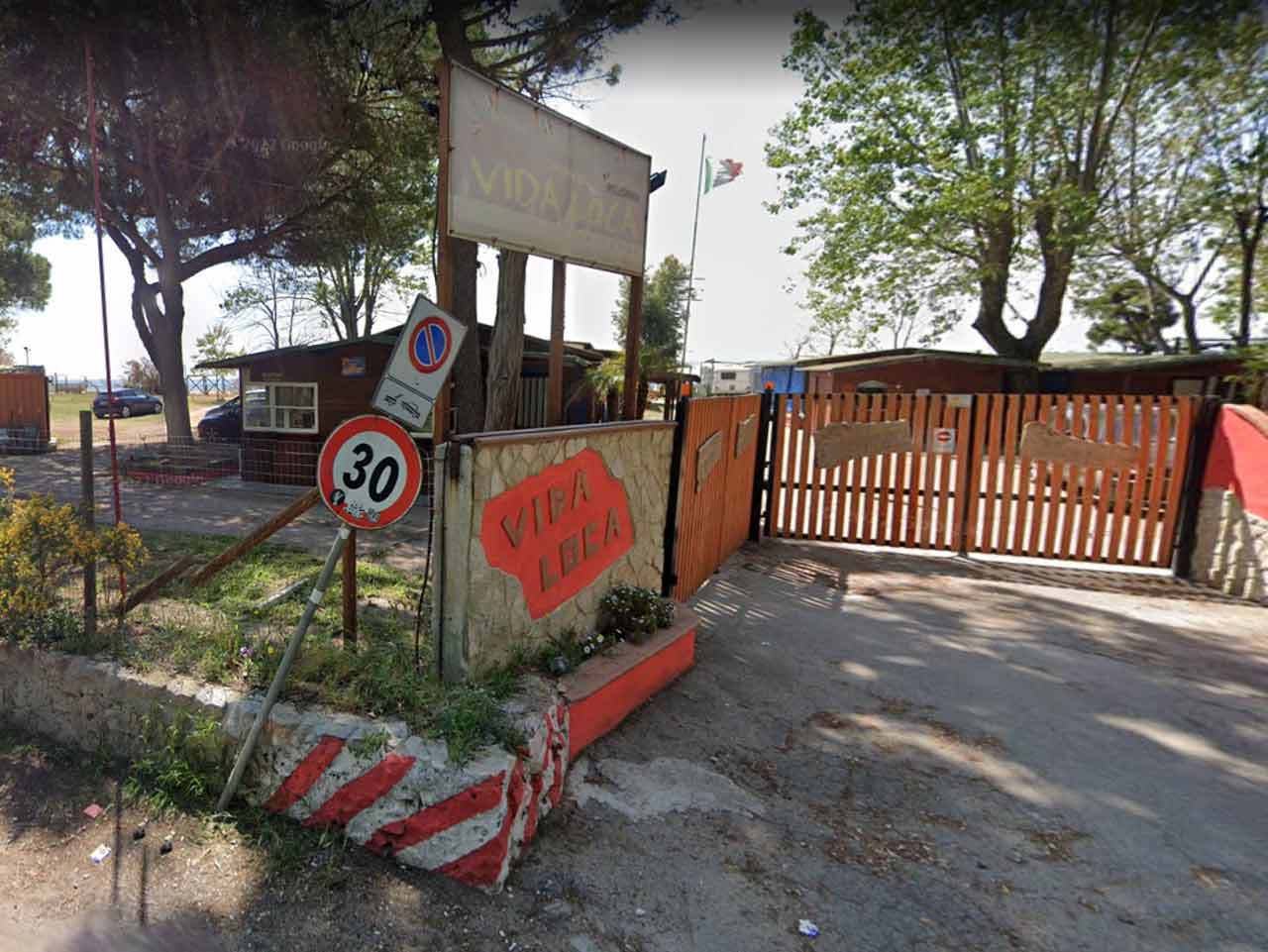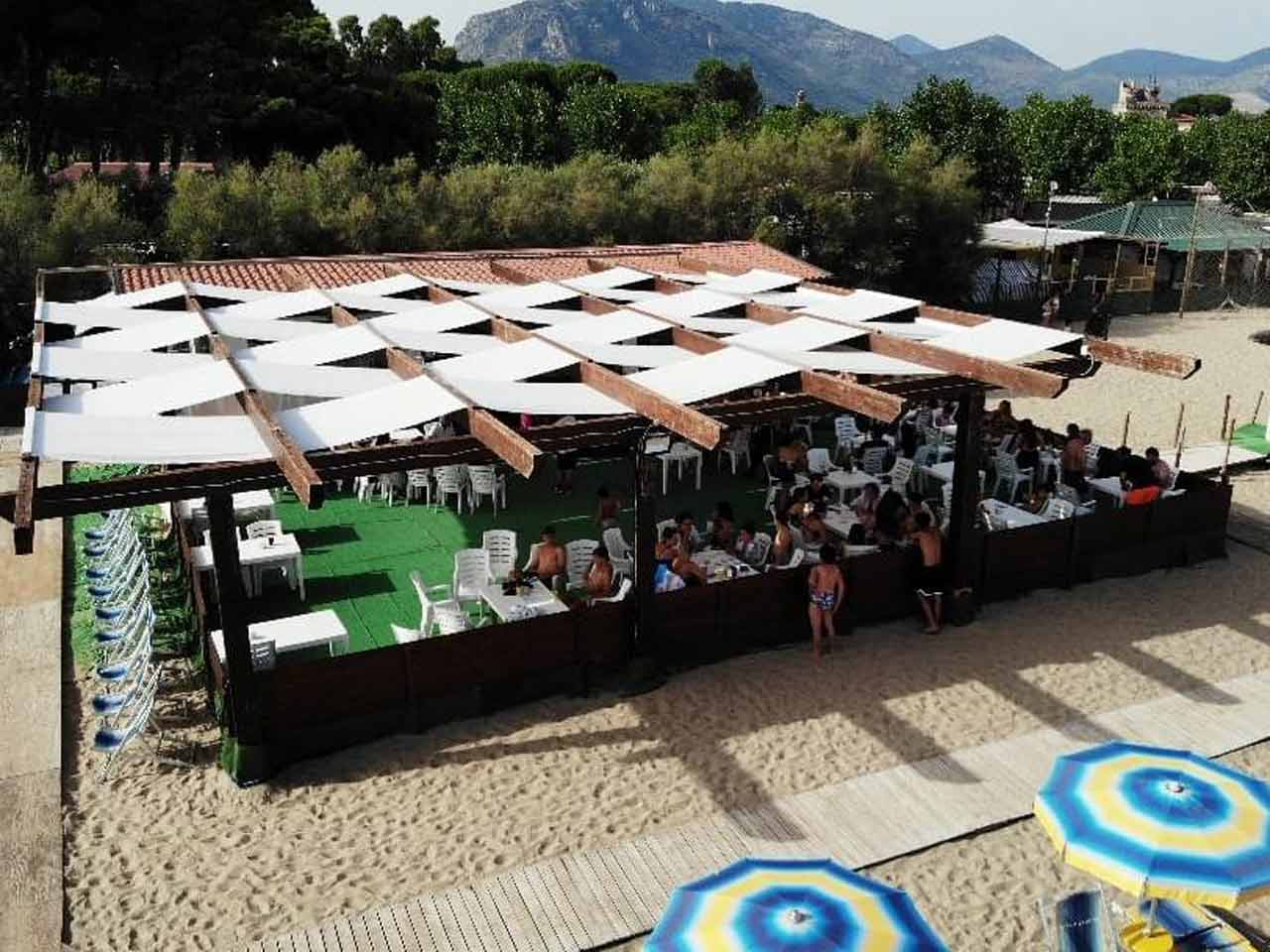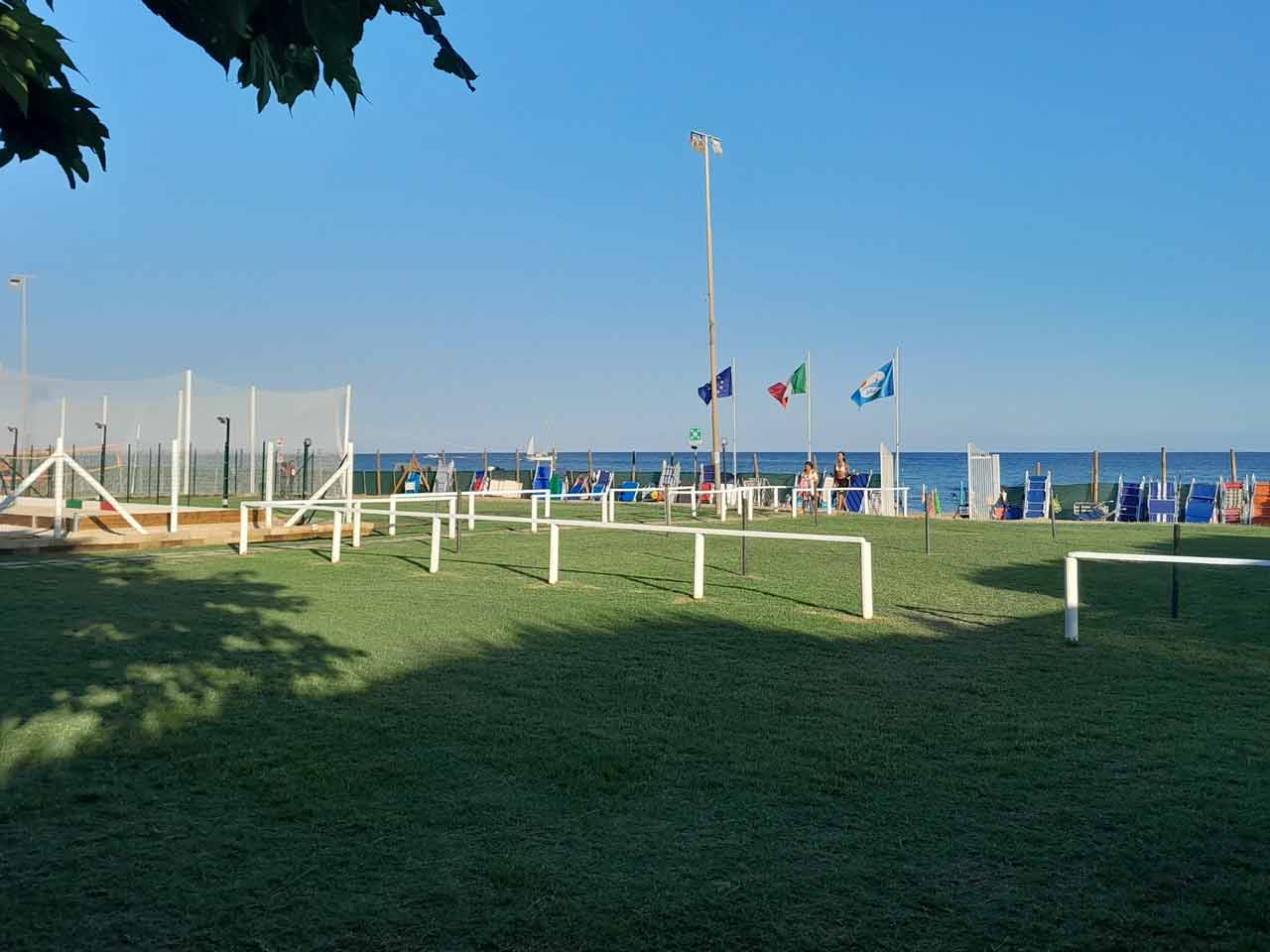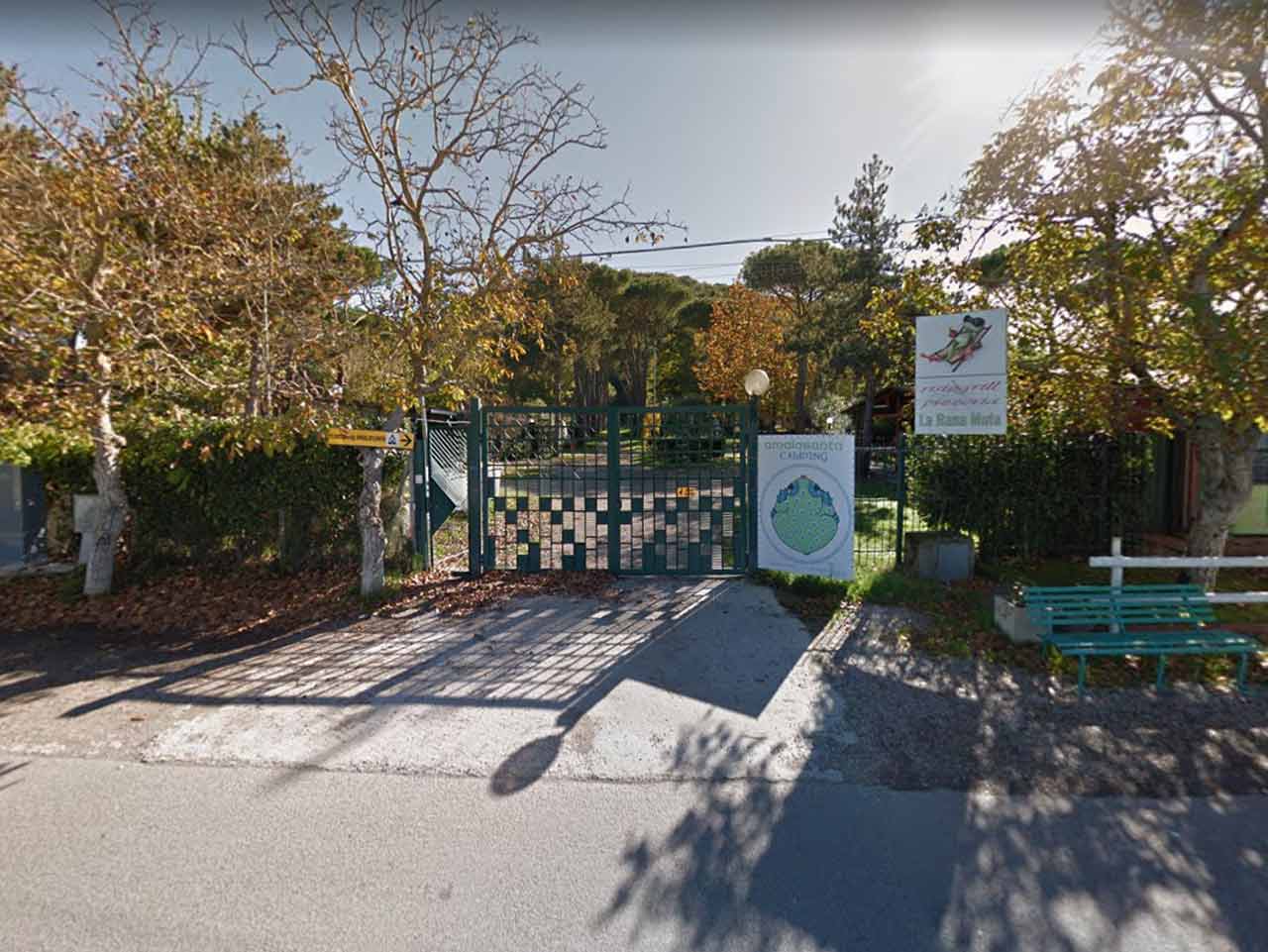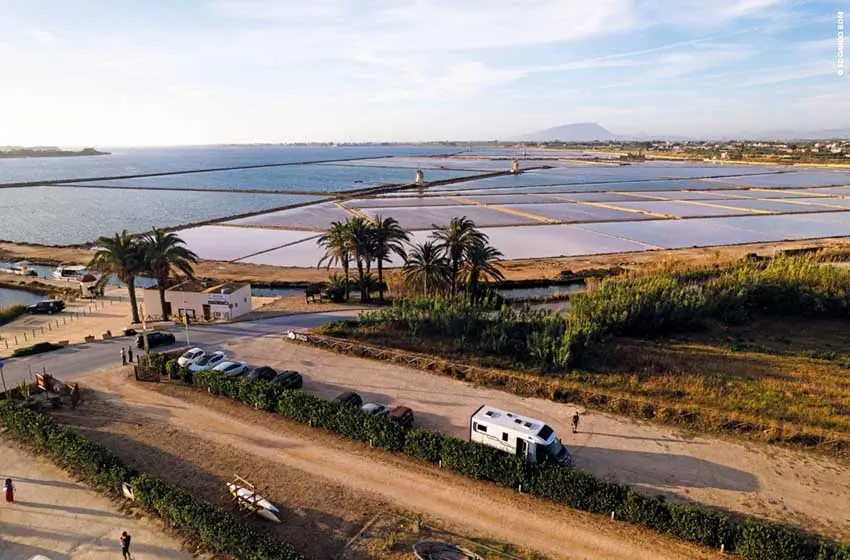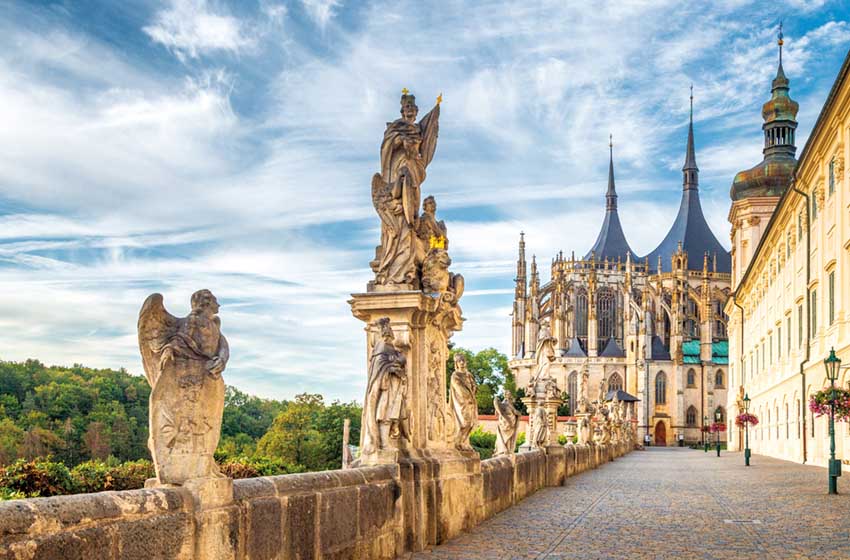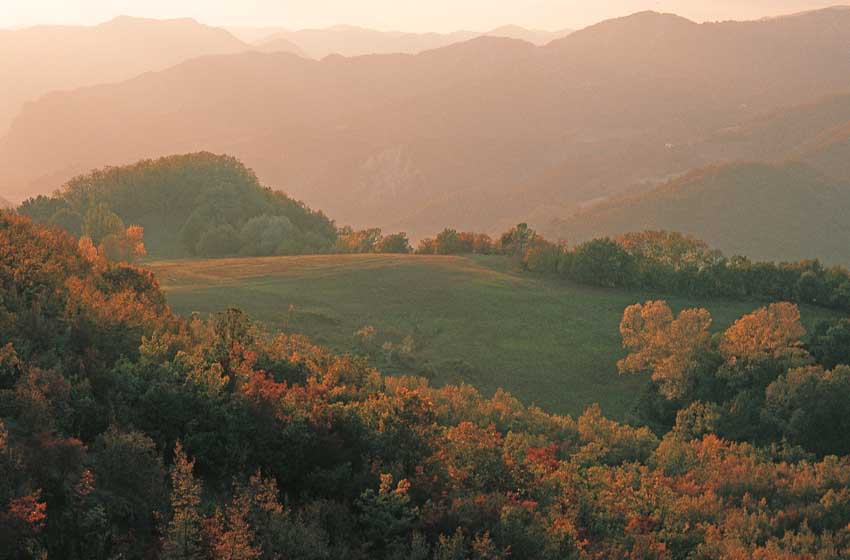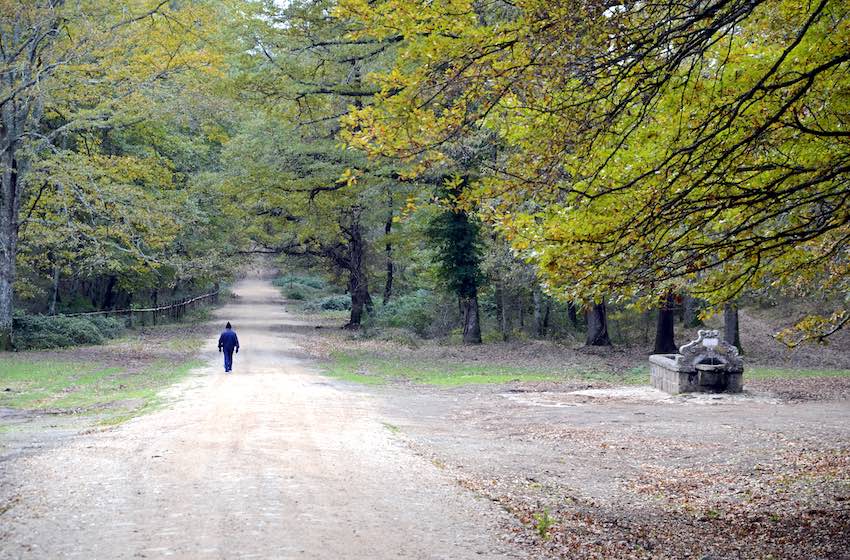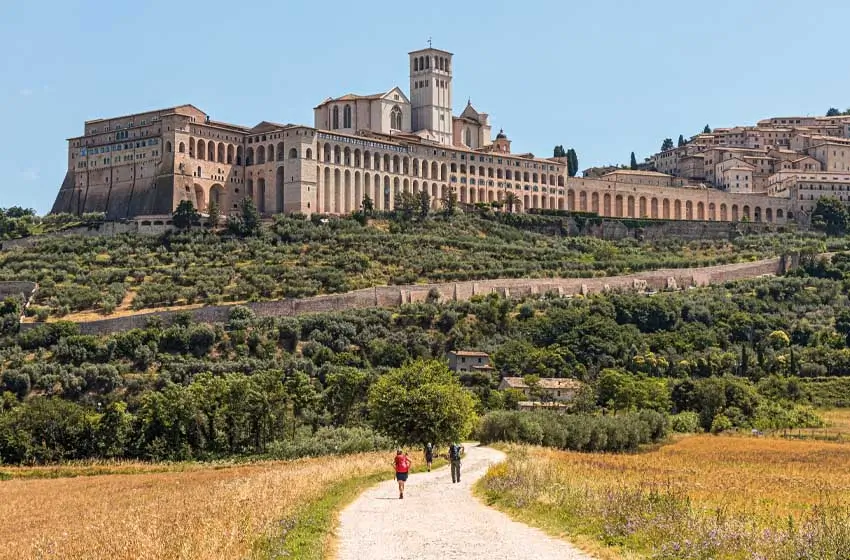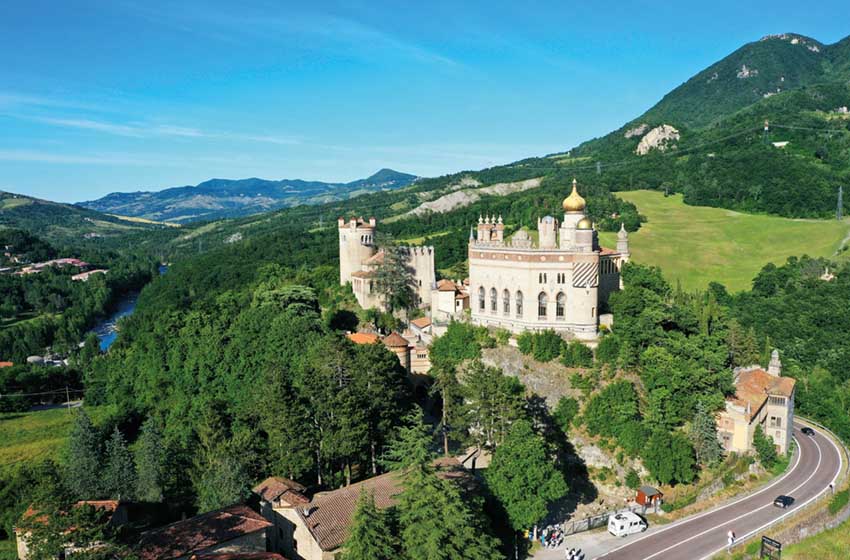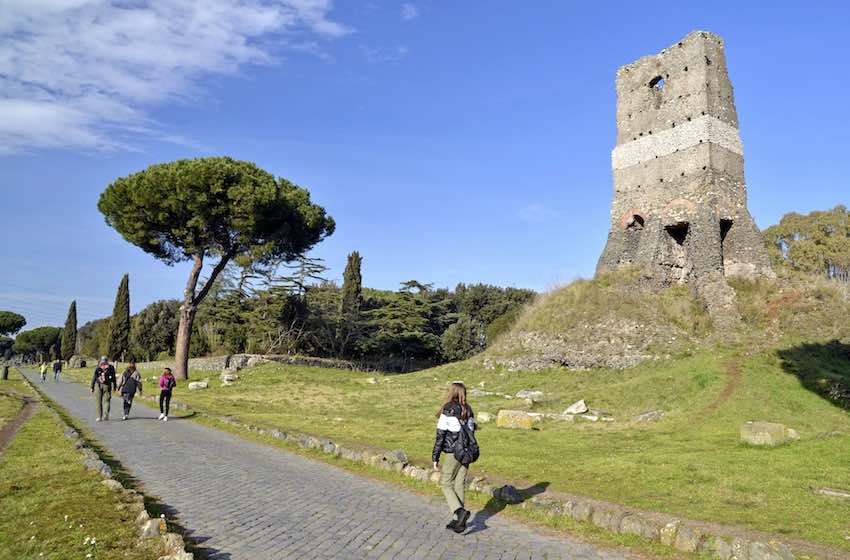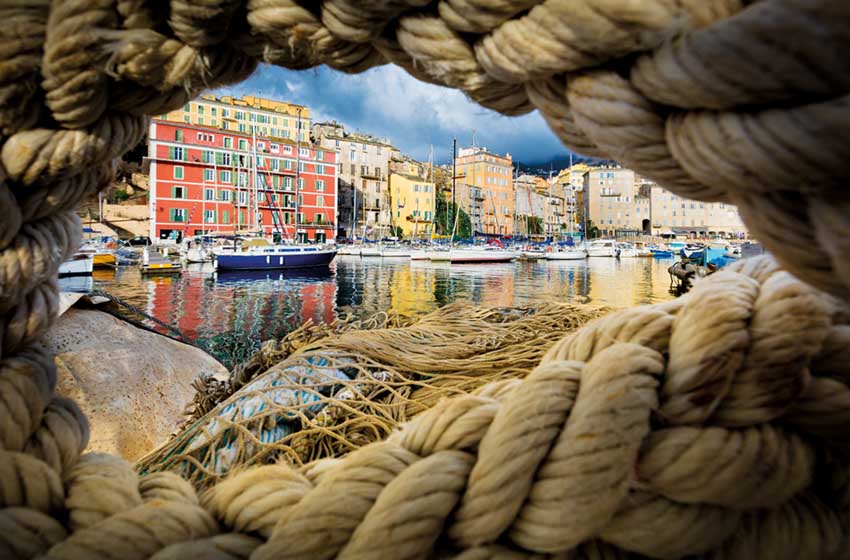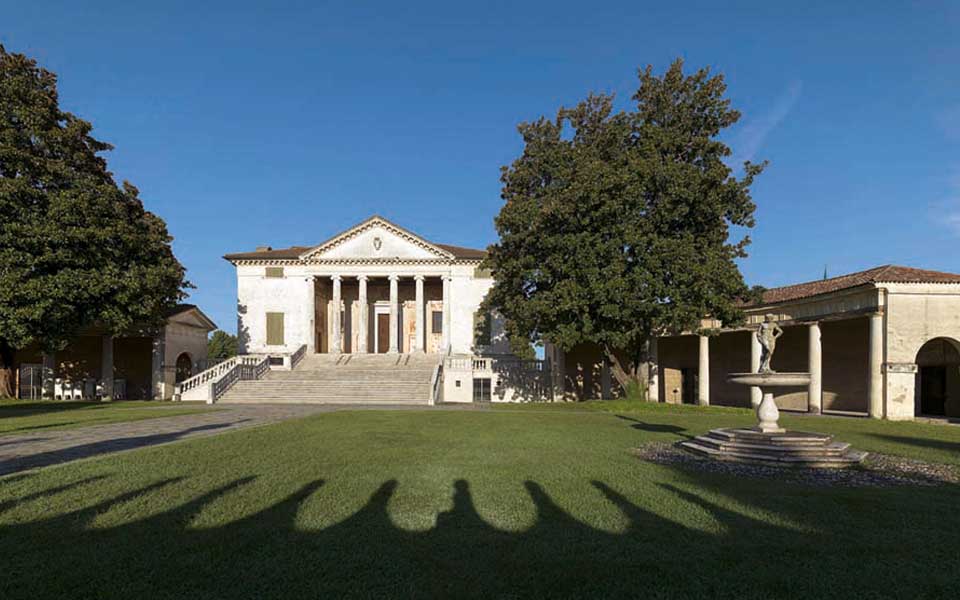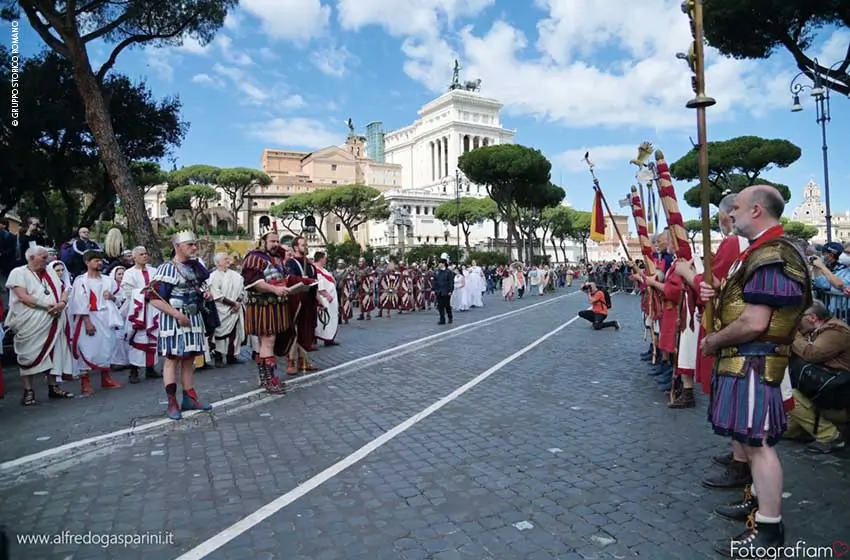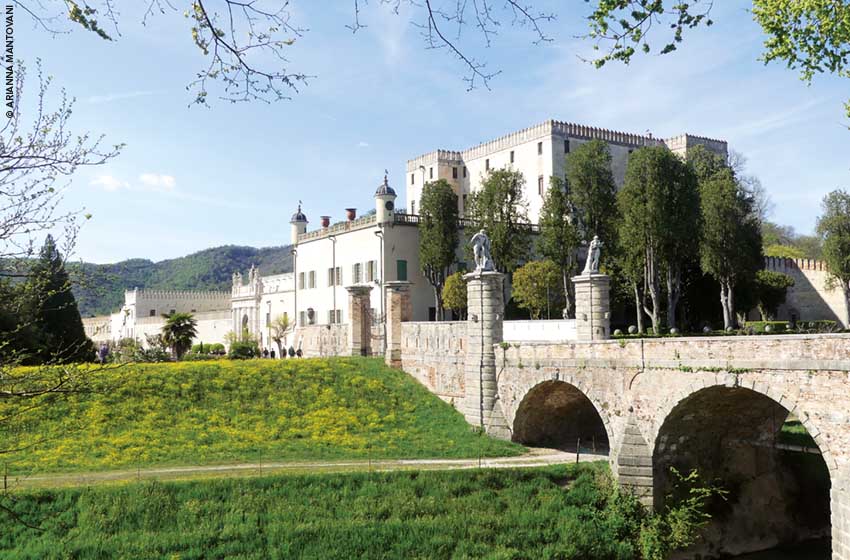Rome is immense, perhaps A month wouldn't be enough to visit it all, let alone a weekend. So why not break away from the most well-known circles and discover it from different perspectives, casting an eye on often ignored places and listening to popular legends and the most disturbing stories of its characters?
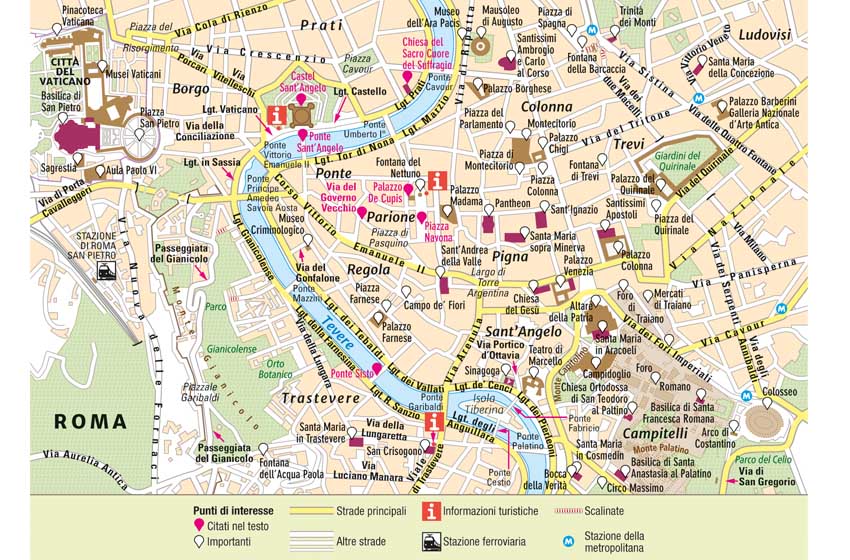
The Museum of the Souls of Purgatory
Of a cadaverous pallor, the church of the Sacred Heart of Suffrage, a sort of miniature Milan cathedral, has stood out on the Lungotevere Prati since 1890. Passing in front of the neo-Gothic temple, no one can imagine what chilling testimonies are hidden inside. Not the little one at all Museum of the Souls of Purgatory it is one of the most unknown and disturbing places in Rome, if by museum we mean a showcase that preserves eerie finds from the afterlife.
The souls in Purgatory are eager to get to Heaven quickly and so every now and then, to speed up the "practice" of purification, they send signals to the world of the living so that their passage into the Kingdom of God may be accelerated with prayers or masses of repose. It matters little if those who receive the disturbing warnings - burn marks on books, wooden tablets or clothes - almost end up there dry, petrified with terror.
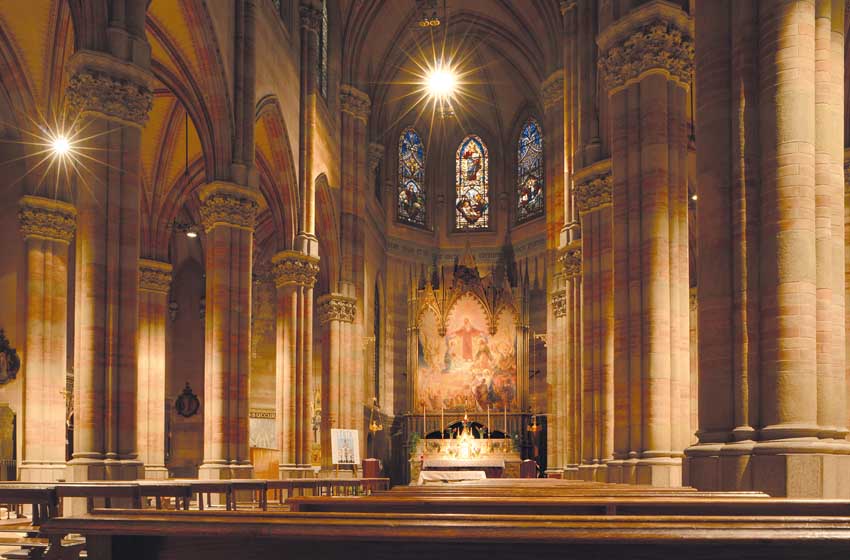
The collection of texts
It was the French missionary Victor Jouet the inspiration behind the collection. Some time after the construction of the church - it was 15 September 1897 - a fire broke out which devastated the chapel of the Virgin of the Rosary. Father Victor saw, or thought he saw, a human face dying in the flames. Then he saw another that remained printed by the soot on a column: "They are the souls - he thought - of those who from Purgatory try to communicate with the world of the living".
The French missionary was so impressed that he began to travel around Europe in search of other similar otherworldly contacts. He collected such a number of finds such as burn marks on wooden boards, books or fabrics, that with the approval of Pope Pius X created the Christian Museum of the Underworld. Some, however, were not very credible, so after the missionary's death the collection was downsized: only the testimonies that could be considered reasonably authentic remained.
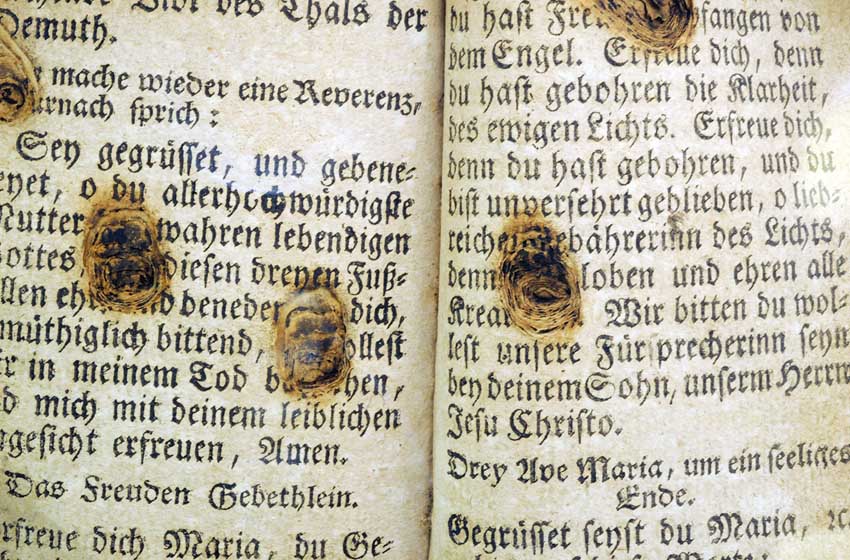
Today there are around twenty artefacts in the small museum, lined up next to each other, among which the imprint of three fingers left on March 5, 1871 on a prayer book by the deceased Palmira Rastelli, who died the previous year. A sort of fire mark more or less similar to the burn on the shirt of the carabiniere on sentry duty at the Pantheon left one night in 1932 by the ghost of King Umberto I, murdered in Monza in 1900 by the anarchist Gaetano Bresci.
Beatrice Cenci at Castel Sant'Angelo
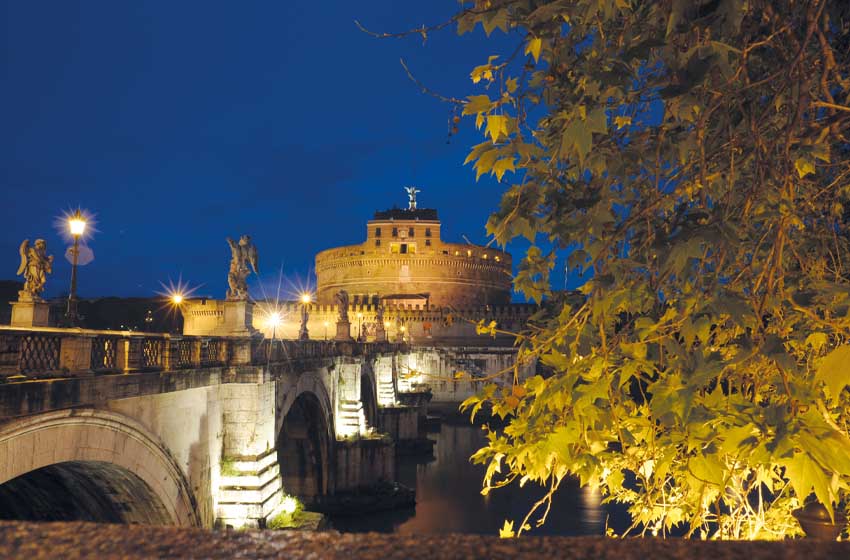
Once you leave the church in a cold sweat, you will be assailed by the doubt of whether or not to believe the many sinister signals sent by souls in pain. However, there is a golden rule to be more likely to spot ghosts: firmly believe in their presence.
Once you have acquired this awareness, you can from the Gothic temple continue the itinerary in search of the other dark presences of the Eternal City: ghosts, specters and restless spirits, some terrifying and others more benevolent, even mischievous.
In the nearby Castel Sant'Angelo, next to the turbid waters of the Tiber, if you see a shadow slinking along the banks it may not be a simple pantegana but thesoul of one of the one hundred and seventy-two pilgrims who drowned in the Jubilee of 1350 due to the crush of some runaway horses they unleashed on Ponte Sant'Angelo, crowded with sellers, beggars and devotees marching towards the Vatican. To increase the suggestion, cross it with slow steps, carefully observing the silhouettes of the ten angels lined up on the parapets, with the symbols of the Passion.
Read also: “The 15 places of San Michele: from Rome to the Gargano”
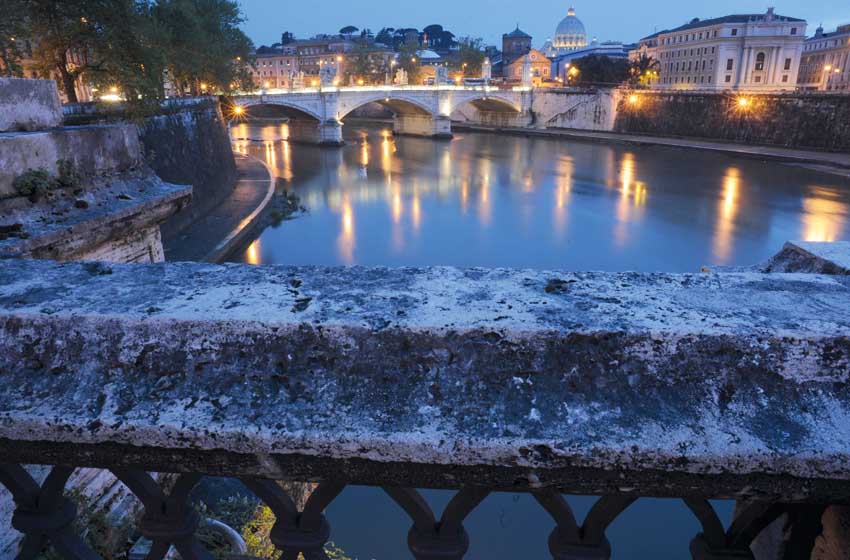
The story of Beatrice Cenci
It is precisely here that, on the anniversary of her execution, you could spot the spirit of Beatrice Cenci: there are hundreds of witnesses who swear they saw her cross the bridge with her head in her hands. On 11 September 1599, after being sentenced to capital punishment for having hatched a plot together with her brothers against her father - who was even responsible for incestuous acts on her - a sword blow cleanly cut her neck. The weapon that ended her short life is displayed together with other macabre artefacts, guillotines and torture instruments at the Criminological Museum of Via del Gonfalone.
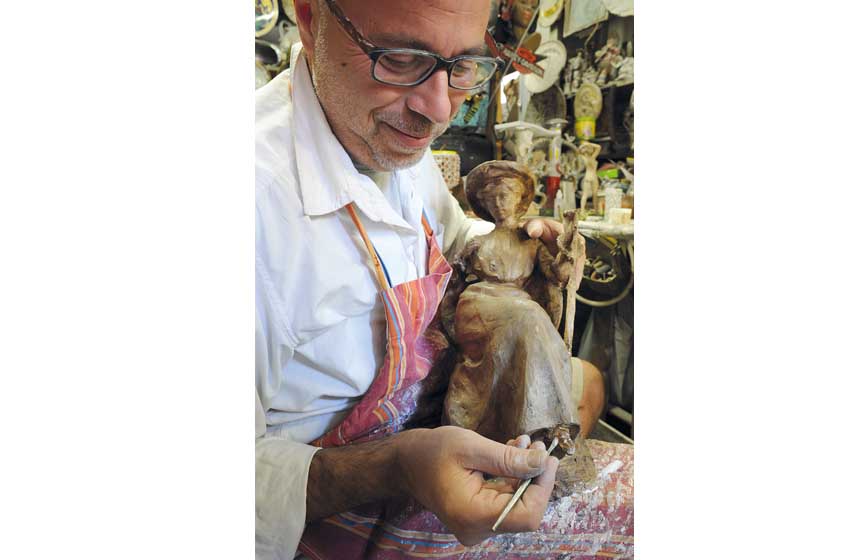
A lot of time has passed, yet looking at the long dark blade we can imagine the gloomy procession that proceeds from the dawn Corte Savella prison towards the gallows. On the wagon of the condemned sit Beatrice, her sister Lucrezia and her brother Giacomo who during the journey was subjected to pincers, that is, the removal of his flesh with a red-hot iron. The first to be beheaded is Lucrezia, then it's Beatrice's turn. Her long hair offers little resistance. The blade falls with a dull thud on his neck while Pope Clement VIII prays for the salvation of his soul. Another moment and Beatrice's head is in the hands of the executioner who shows it to the public. An end that shocked him all the same Caravaggio, , confused in the mass of spectators petrified by terror.
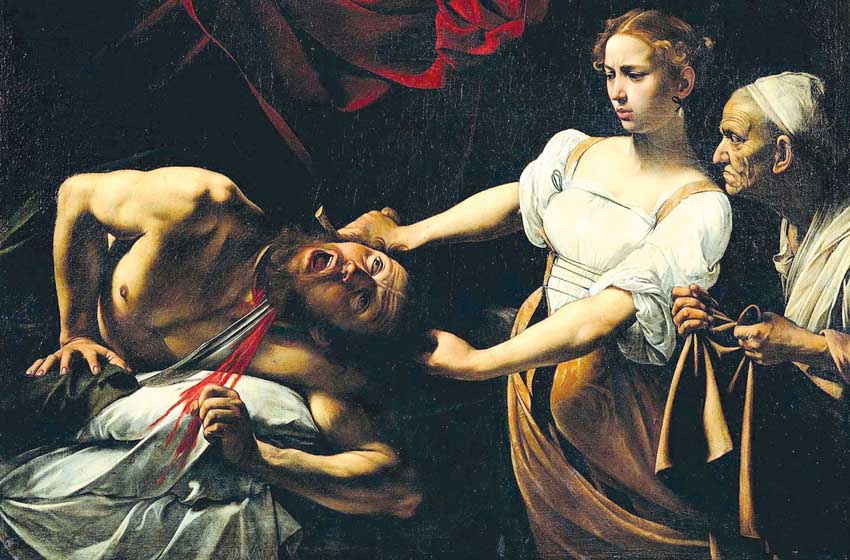
It was perhaps this heartbreaking vision that inspired one of the master's masterpieces, Judith and Holofernes, the biblical episode in which the Jewish widow cuts off the head of the Assyrian leader with a blow of the scimitar. In any case, you can admire the painting at Palazzo Barberini Art Gallery.
The story of Mastro Titta
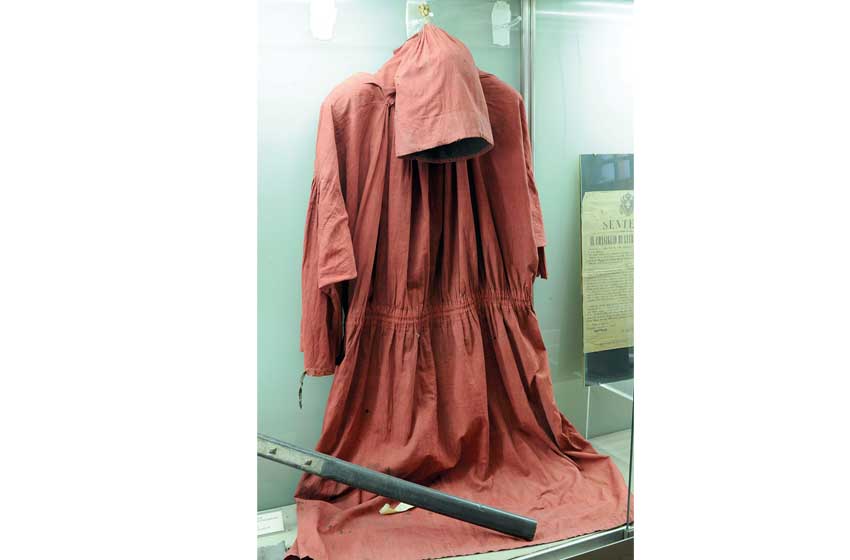
There is another disturbing ghost that haunts Castel Sant'Angelo: it is that of Mastro Titta, the executioner who between 1796 and 1864 executed five hundred and fourteen poor devils with guillotines. You might spot him around here while he sets up the scaffold or in the other places where he used to practice: next to the church of Santa Maria in Cosmedin, where every day an uninterrupted line of tourists puts their hand in Bocca della Verità , or in Piazza del Popolo, where every now and then the ghosts of the carbonari Targhini and Montanari, beheaded here in 1825, also appear. They wander around calmly with their heads in their hands, but apparently for good reasons: they reveal the numbers of the lottery to those who don't run away in horror.
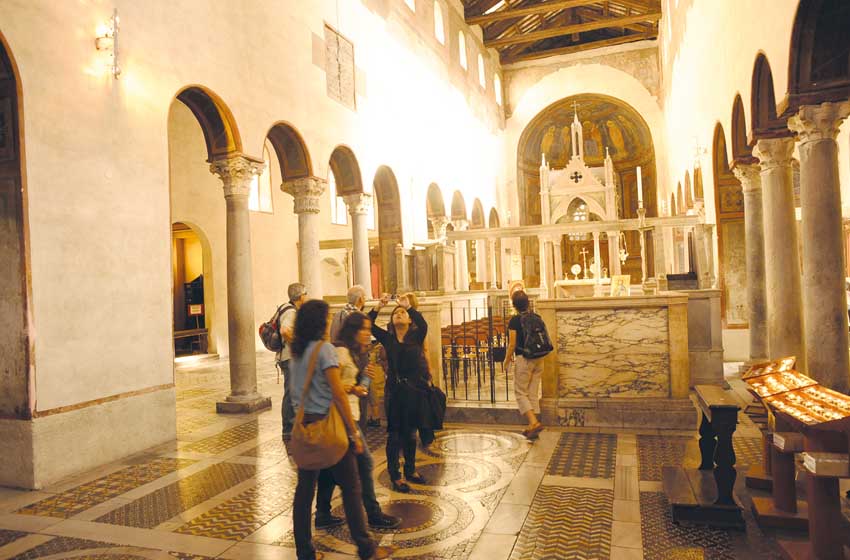
Returning to Sant'Angelo castel, a recommendation. If you meet a strange character wrapped in a red tunic who gives you a pinch of tobacco, run away: the ruthless Master Titta (even his "work uniform" is exhibited at the Criminological Museum) used to offer it to the condemned before the execution.
Read also: “Journey among the most beautiful bridges of Northern Rome”
The Pimpaccia in Ponte Sisto

From Ponte Sant'Angelo along Lungotevere Raffaello Sanzio in about twenty minutes you arrive at Sisto Bridge. It is here that on stormy nights a fiery carriage driven by the ghost of Olimpia Maidalchini known as la Pimpaccia, greedy and powerful wife of Pamphilio Pamphili, brother of Pope Innocent long trails of fire in the air before disappearing into the waters of the Tiber. Palazzo Pamphili was in fact located in Piazza Navona, the residence from where Pimpaccia wove her plots to strengthen his already immense power.

Yes, Piazza Navona: another place haunted by strange presences, including certain ones mysterious living statues that seem to come from other worlds. For example, there are those who tell of a tree man with a long canopy of branches who holds a small sphere in his hands where the fountain of the Four Rivers; and there are those who swear they have spotted a mysterious and attractive woman with a red hat sitting on the edge of the Fountain of Neptune, right in front of Palazzo De Cupis, another disturbing residence that hides a chilling mystery in the folds of her past.
Costanza De Cupis in Via dei Serpenti and the mysteries of Via del Governo Vecchio

In fact, it is behind a window of the building that every now and then, on full moon nights, it appears cadaverous hand of Costanza De Cupis. It is said that the attractive Roman noblewoman had such perfect hands that an artist decided to make a cast of her, which was then displayed in a shop in Via dei Serpenti. But they were too beautiful, so much so that they aroused the envy of many. And in fact, due to an unfortunate infection perhaps caused by a curse, her hand was amputated and she died. A bad story.
Like that of the paranormal phenomena that haunted the house on the second floor of the building at number 57 Via del Governo Vecchio, a stone's throw from Piazza del Pasquino: chairs and tables moving, loud bangs, windows slamming, sinister voices. A chilling poltergeist phenomenon, so much so that in 1861 the owners abandoned the house. It is said that even the police who arrived to write a report were chased away with invisible blows and pushes from the spirits.
Giordano Bruno and John Keats at Campo de' Fiori

There are still many ghosts of Rome, each pervaded by a very personal mood. The spectrum of Giordano Bruno for example, burned alive at the stake in Campo de' Fiori on 17 February 1600, he wanders desperately under the moon next to indifferent young people, sitting all night under his statue sipping beer and chatting.

The sweet and melancholic one of the young man English poet John Keats instead he spends his time reciting verses on the steps of Trinità de' Monti, or he sits on the Barcaccia fountain, right under the house where he died at just twenty-five; his remains rest in the non-Catholic cemetery located in the shadow of the Pyramid of Cestius, another place of great charm and suggestion.
Julius Caesar and Nero in ancient Rome

The restless ghost of Julius Caesar every now and then he appears in San Pietro, sometimes between the Forum and the Mercati Traianei or at Piazza Argentina where he was murdered; the spirit of Berenice of Cilicia frequents the Portico d'Ottavia, in the Jewish ghetto, while lhe ghost of Nero materializes around the basilica of Santa Maria del Popolo, built on the site of his primitive burial, a mysterious temple crowded with skulls, tombstones and images that evoke death.
Read also: “Ostia, a day among the mosaics and columns of ancient Rome”
The Capuchin chapel

If instead you are looking for a disturbing place, perhaps the most chilling in Rome, go to church of the Immaculate, Located Via Veneto, the way of the Dolce Vita. Ironically, it is inside that the remains of hundreds can be seen friars buried byCapuchin order between the 1600 and the 1870: six macabre rooms with mummified faces, skeletons, skulls, and bones of all kinds which sometimes make up macabre pictures, even a chandelier. A vision that dismayed the Marquis De Sade himself, visiting the crypt on 27 October 1775.
Er Margutta, the ghost of Via Margutta

It remains to be said about the ghost of Via Margutta, crowded with art galleries and craft shops. Is called Er Margutta is a prankster ghost who enjoys stealing color from painters' tubes. From the street where Federico Fellini and his wife Giulietta lived, you just need to walk a few hundred meters to reach an old-time shop where Gelsy and Federico, mother and son, restore terracotta heads, arms, legs and tow hair with ancient gestures. It is the magical doll hospital in Via di Ripetta. No ghosts, however, here: just the charm of the now distant time in which things had a soul.

Text and photos by Paolo Simoncelli
--------
There are many campsites and rest areas in Rome that allow you to visit the city in a weekend: discover those affiliated with the PleinAirClub!



